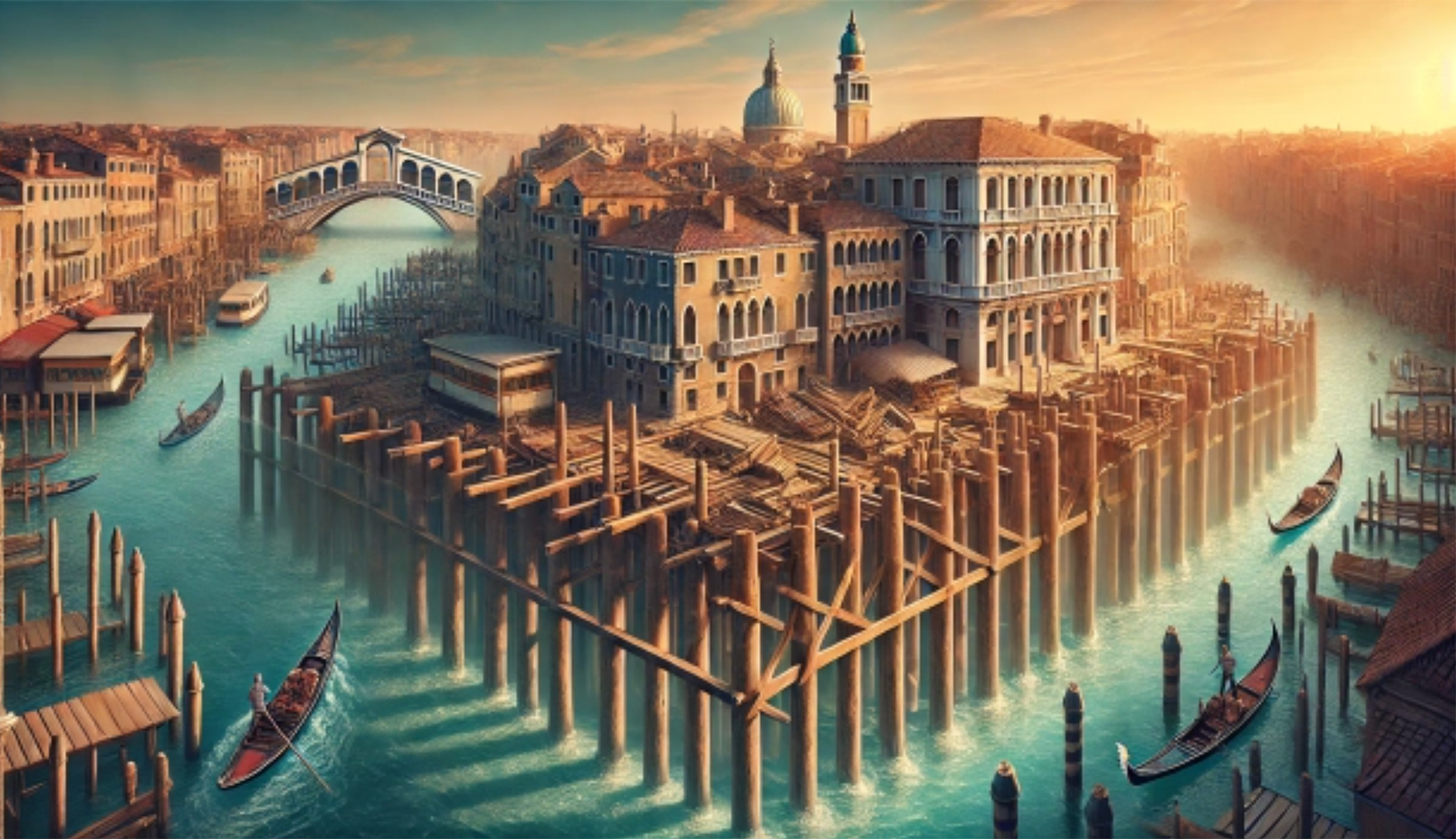

Pond of Venice, year 452. Prompted by the Huns' invasion, several inhabitants of the interior of the Italian peninsula took temporary refuge in the swampy area. But the Lombard invasions came in a few years, and it would become a permanent home for those immigrants. It was a unique location to protect them from the barbarians and later gave them the path to becoming a naval power. But building in the swamp was not easy. And for this they developed a complex system of wooden poles.
Venice is not the only city built on wooden poles. Another example in Europe is Amsterdam. But in Amsterdam the rock layer is much closer to the surface of the water, and in Venice there was no way to fix the foundations in the deep rock. In the absence of solid support, they created a self-supporting system: with the poles compactly placed, the pressure itself acts as a support. But for that, it took a lot of work and wood.
A special profession was born: the job of the battipali was to hit the poles constantly with hammers. On average, they used nine poles per square meter. This means, for example, that the foundations of the Rialto Bridge are made up of 14,000 poles, and they say that to begin the construction of the Basilica of San Marcos in 832, they had to throw 10,000 oak trees; the oak tree was the most precious wood and would later be used only for the construction of boats.
In addition to the oaks, for centuries they used as their foundation the millones of the Cadore Mountains and the Fiemme Valley, almonds, pine trees, fir trees and elm trees. That is why it is said that under the city there is a forest, that Venice is an inverted forest
In addition to the oaks, for centuries they used as their foundation the millones of the Cadore Mountains and the Fiemme Valley, almonds, pine trees, fir trees and elm trees. That is why it is said that under the city there is a forest, Venice is an inverted forest.
It is, of course, a dead forest, but it encouraged efforts to keep the surrounding forests alive. An official document from 1111 of the Fiemme Valley contains rules for the exploitation of forests without exhaustion. For bioeconomist Nicola Macchioni, this means that the adoption of these measures began long before it was received in writing and, as such, “forestry was invented in Venice”.
Despite the rejection of wooden structures in the 19th century and the beginning of the construction of cement and steel foundations, the tendency to use wood has begun to prevail again. The old wooden structures are in an anaerobic state and, in the absence of oxygen, cannot be attacked by fungi and insects. However, the bacteria do “eat” the wood much slower. In addition, the voids caused by the bacteria are filled by the sludge, maintaining the original shape and pressure of the structures.
Alezander Puzrin, a geomechanical scientist at the ETH University in Zurich, says: “Today, concrete or steel pallets are designed with fifty years of warranty; they can last longer, but that’s the standard.” The underwater forest of Venice, on the other hand, has endured for a millennium and a half.